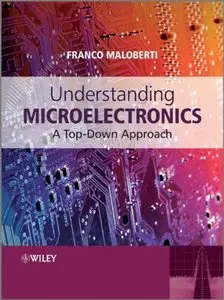Franco Maloberti, "Understanding Microelectronics: A Top-Down Approach"
English | ISBN: 047074555X | 2011 | PDF | 696 pages | 41 MB
English | ISBN: 047074555X | 2011 | PDF | 696 pages | 41 MB
The microelectronics evolution has given rise to many modern benefits but has also changed design methods and attitudes to learning. Technology advancements shifted focus from simple circuits to complex systems with major attention to high-level descriptions. The design methods moved from a bottom-up to a top-down approach.
For today’s students, the most beneficial approach to learning is this top-down method that demonstrates a global view of electronics before going into specifics. Franco Maloberti uses this approach to explain the fundamentals of electronics, such as processing functions, signals and their properties. Here he presents a helpful balance of theory, examples, and verification of results, while keeping mathematics and signal processing theory to a minimum.
Key features:
Presents a new learning approach that will greatly improve students’ ability to retain key concepts in electronics studies
Match the evolution of Computer Aided Design (CAD) which focuses increasingly on high-level design
Covers sub-functions as well as basic circuits and basic components
Provides real-world examples to inspire a thorough understanding of global issues, before going into the detail of components and devices
Discusses power conversion and management; an important area that is missing in other books on the subject
End-of-chapter problems and self-training sections support the reader in exploring systems and understanding them at increasing levels of complexity
A supporting website (http://www.wiley.com/WileyCDA/WileyTitle/productCd-047074555X,descCd-relatedWebsites.html) presents the interactive student lab, ElvisLAB, where students can conduct virtual experiments on circuits together with PowerPoint slides for lecturers.
Inside this book you will find a complete explanation of electronics that can be applied across a range of disciplines including electrical engineering and physics. This comprehensive introduction will be of benefit to students studying electronics, as well as their lecturers and professors. Postgraduate engineers, those in vocational training, and design and application engineers will also find this book useful.



